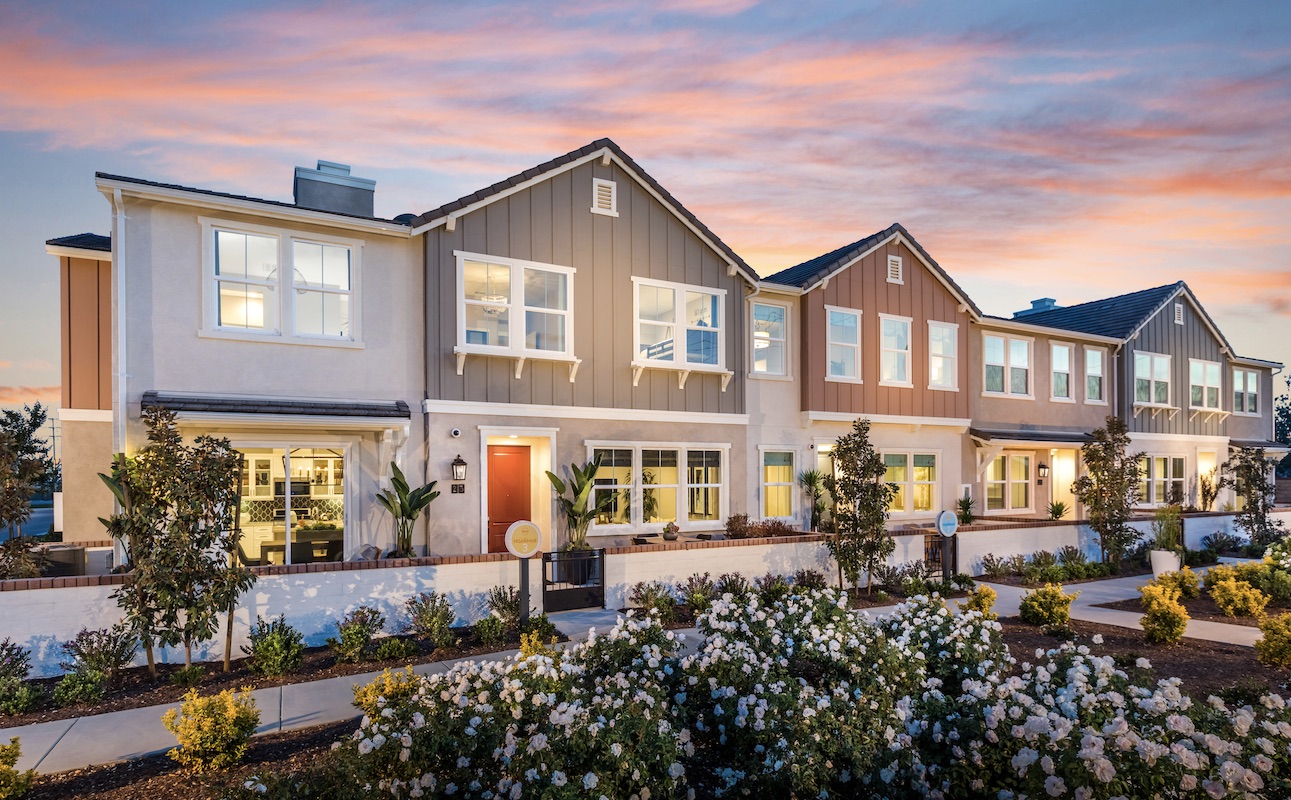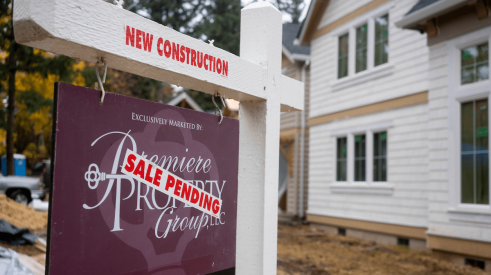As homebuyer markets evolve, sales and marketing teams are keeping a close eye on differences among buyer segments, allowing them to more confidently target diverse markets with products and plans specific to distinct slices of buyers.
This ability is especially crucial in large master plans, where timing and control of construction, closings, and sets of different builders all have an impact.
But how much segmentation is too much or too little? What kind of dialogue does there need to be between the land-acquisition and marketing teams and home builders? And, ultimately, what is driving the decision to produce types, sizes, and quantities of homes?
Getting these issues right can mean the difference between big sales success and big sales challenges. Without a doubt, good synergy and good planning are absolutely crucial.
RELATED
- Homebuyer Demographics: It’s 2020. Are You Ready for This? Six distinct generations that are influencing the housing market
- The Reinvention of the Master Planned Community No more cookie-cutter streetscapes in master planned communities, as builders focus on product diversity, quality of life, and neighborhoods
New-Community Synergy by Design
In one Southern California community in the Inland Empire east of Los Angeles, our team at Brookfield Residential ensures not only that neighborhoods are properly segmented, but that the larger planning and marketing initiatives reinforce one another.
In fact, the master plan of New Haven in Ontario Ranch has offered up to seven distinct neighborhoods at once, each segmented to a specific buyer profile and delivering an exceptional experience for our customers.
Supporting these efforts is the power of one: being the developer/home builder in control of the process.
A common criticism of communities created by just one developer is that they suffer from homogeneity or blandness. But when you stand in New Haven’s central park and take a 360-degree look around, you see a wide variety of product, from higher-density townhomes to detached residences, side by side.
Choosing to build out all seven neighborhoods rather than selling neighborhoods or lots to other builders enabled Brookfield Residential to better manage all segmentation and launches. It also allowed us to dial in our pricing and incentive strategies, all the way down to broker referral fees and buyer incentives.
With up to seven New Haven programs running at once, we keep operations as efficient as possible. But because we are--—at all phases of development and marketing—in control of the timing and product segmentation, we can be super-efficient, by scaling and building at the needed levels for sales management, operations, marketing, and construction.
Slicing and Dicing Buyer Segmentation
The diverse segmentation offered at New Haven shows significant variety among products. While one attached townhome neighborhood has two to three bedrooms in three plans, another has one to three bedrooms in a denser six-design plan mix. The density also varies, with a 14-plex next to a more roomy set of five-plexes.
Close by are detached homes, but with yards smaller than the largest detached residences and built in clusters with a shared driveway.
At every step, the thinking was to provide a variety of choices as well as the opportunity to move up, and several families have moved from one neighborhood to another.
Note: We have even seen several of these move-up buyers take advantage of iBuyer services from Zillow and Opendoor, where they can receive an instant offer on their home and choose their closing date, making it more convenient for them to qualify for a mortgage and move to a new home on their schedule.
Among the reasons for this nicely sliced segmentation was the dialogue that occurred between key teams prior to planning. Our land acquisition team engaged with sales and marketing early in their process. And our teams worked closely with the City of Ontario, giving us tighter control over community design to help craft a sense of place—right down to naming streets to reinforce and strengthen branding.
At the same time, we were able to alter and even broaden the New Haven footprint as it progressed, incorporating adjacent planned communities into the master plan.
So, in addition to the 1,003 homes at New Haven, we added more enclaves, namely Emerald Park with 265 homes, and Canvas Park with 593 homes. At build-out, New Haven will be developed over a total of 282 acres with 2,550 homes.
These new neighborhoods—also segmented with multiple product types—will share access to amenities with the larger New Haven plan and vice versa. It was always a goal to keep HOA dues manageable. With amenities shared, costs for residents’ use of them were kept relatively low while reinforcing that all of New Haven is for all residents.
In fact, as the community grew, this approach helped keep a lid on costs in general. Instead of having three separate master plans, we carefully leveraged planning, efficiencies, branding, and marketing across all three.
RELATED
- National Homebuying Trends That Give Builders an Edge in Local Markets Three recent national studies that reveal opportunities for builders to create competitive distinction within their markets
- What Buyers Want—Recent Consumer Preference Research Research to help builders differentiate their product from resales and deliver (and sell) more desirable homes and communities
Features That Are Attracting and Serving Millennial Buyers
This particular region of Southern California has seen increased activity from home shoppers for its attainable price points within a uniquely designed master-planned community that incorporates the way consumers live, shop, and work today.
That means Millennials. Conventional wisdom dictates that Millennials want to live in urban cores, but there is a larger, overriding desire among this cohort to own a home. The biggest piece of the deal for many of them is finding attainable housing that is convenient to shopping, recreation, and jobs.
While the number of jobs is growing in this area, many of New Haven’s Millennial buyers choose to commute via rail to their workplaces in Orange County and Los Angeles County (a Metrolink rail station is in nearby Corona). We reinforced these decisions with amenities.
The starter homes we offer at New Haven are perhaps not as large as buyers’ parents’ homes were, but surrounding them is a “backyard” of resort-style pools, clubhouses, tot lots, barbecue areas, and parks. Buyers can have all of this for reasonable homeowner fees of approximately $150 per month.

The entire community is also served by “gigabit” infrastructure, with lightning-fast downloads for working and enjoying entertainment at home (similar to those in Google Fiber communities in various cities nationwide). That has been another Millennial attraction.
To date, our efforts have resulted in about 56% of sales to Millennials, marking the second straight year that New Haven was a national leader in Millennial sales.
How to Attract Millennials and Demographics Beyond Generation Y
And, as the Millennials have come to New Haven, so have their parents, and we have designed products for them and other cohorts and household formations. In fact, Millennials at New Haven actively recruit their parents, and the segmentation we’ve created plays a huge role in attracting them.
In some cases, those parents (Gen Xers and older) are buying larger, detached homes to be near their children, while others without children close by often choose a townhome. There is a lot of connection between these generations, and the master plan amenities, community events, and varied home choices help make this bond stronger.
In addition to those distinct segments, New Haven also offers homes for young families, move-down families, and empty nesters looking for lock-and-leave (read: low- or no-maintenance) lifestyles. We have seen homebuyers of all ages seeking such conveniences, many of whom are younger, first-time buyers.
Role of Branding and Marketing in the Development Process
To support the differentiation at New Haven, our team incorporated branding and marketing earlier than usual in the development process to ensure the synergy we knew was necessary and valuable, from segmentation and street names to the location of the models or sales gallery, site lighting and signage, mailboxes, and landscaping. With our overall control, we minimized costly changes midstream and ensured a more consistent sense of place.
The City of Ontario also was an essential planning partner from the start, giving feedback on segmentation, community design, elevations, and other key milestones.
By design, and from the start, the synergy we created between distinct products and neighborhoods and an overall community feel at New Haven carries through the site design, the amenities package, segmentation, the marketing effort, and community outreach, resulting in sales and referral rates well above average in this market and nationally.
Caitlyn Lai-Valenti is senior director of sales and marketing at Brookfield Residential, in Orange County, Calif.
Advertisement
Related Stories
Sales
What the NAR Commissions Settlement Means for Home Builders
The legal settlement will improve transparency during the home sales process, mitigate predatory practices, and help preserve profitability for home builders
New-Home Sales
Mortgage Rates Are Up but New-Home Sales Still Solid in March
Lack of existing home inventory drove a rise in new-home sales, despite higher interest rates in March
Sustainability
Mention of Eco-Friendly Home Features Is on the Rise in Sales Listings
Home listing descriptions using eco-friendly terms have been rising over the past five years in line with growing consumer interest in the environment and energy efficiency







